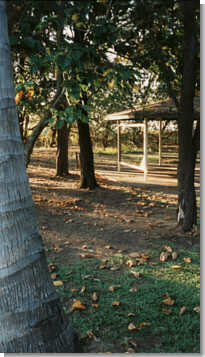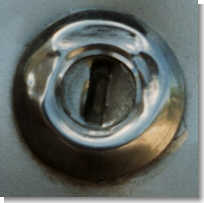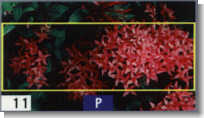

|
| Near Casuarina Beach. Thanks to the data imprinting of the S1 I know this photo was taken at 28mm, f/4.0, 1/45s. While this photo was being taken my car, only a few metres away, was being broken into. |
|---|
Sure.
The whole pitch of the S1, and the Advanced Photo System (APS) in general, seems to be a battle between traditional high image quality, delivered by the 35mm format, and about a dozen, non-image-quality related gimics, promised by APS. Trouble is, many of the 'gimics' are truly useful.
Mid-roll-change works brilliantly. Swap films at any time without fuss; without losing a single frame. This feature isn't compatible between cameras - don't take your half-used film from a Canon Elph/IXUS and expect any Vectis camera to know what to do with it.
Data imprinting should be a fantastic feature. This is an area where 35mm has failed to deliver a solution. Imagine being able to record exposure data, so you can learn from your mistakes and successes. Imagine being able to have the date and time on the back of the print so you can say, with authority, 'here's my boy when he was 8 days old". Trouble is, only the date, not the exposure information, came out on the back of my prints. The Vectis manual is full of mini-disclaimers that "labs may not yet support this feature".
You can also print "select titles" e.g. "I love you", on the back of your prints. Fantastic.
Other features: "No-print" - if you've taken a picture that's gone wrong at the last second, then set the print-count to zero and you will not receive (or pay for) this wasted shot. Good feature, not supported by my lab. You can also set the print quantity to greater than one, though this must be done before the shot.
The most advertised feature of APS seems to be the three print formats: Classic (C) which comes out as standard 6x4" prints from my lab; HDTV (H) which uses the full 30x17mm image area of the film and produces a 7x4" print; and Panoramic (P) which crops the image severely and comes out as a 11x4" print. I suppose this is one up on the average 35mm camera with 'only' two formats..
That's the APS stuff. More traditional observations follow.
The camera and lenses are splash-proof. This is a unique and excellent feature for a SLR. The body itself is small (126.5x76.5x63.5mm), light, and comfortable to hold.
The exposure system is capable. You have honeycomb or spot metering. Program(non-shiftable), appeture, shutter priority, or manual; as well as about six subject modes.

|
| The lock of my car after being 'opened' with a screwdriver. This, of course, presents a good opportunity to test the close up capabilities of the Vectis. 56mm, f/9.5, 1/125s |
|---|
The autofocus seems fast and accurate, with the usual weakness when trying to focus on low contrast subjects. It's a bit of a trap that although the camera has a manual focus option, you need a lens with a focusing ring. The standard 28-56mm lens does not have a manual focus ring and so you have no manual focus whatsoever if you buy a S1 with this lens. Get the 22-80mm lens as standard.
The camera is generally quiet, though certainly not silent. The pop-up flash makes an incredible racket when it pops up. It actually scared me the first time, and still scares my baby son. The flash is used as a low light illuminator. Luckily it's easily turned off. The sync-speed is 1/125 seconds and the guide number (quoted for the new APS standard film speed of ISO 200) is 14. This means it's a guide number 10 at ISO 100. Pretty poor. You can buy a special splash-proof Vectis flash or use an xi series flash unit.
The shutter speed range is a respectable 30s - 1/2000s + Bulb. The film transport is single frame, (slow) continuous or self timer. Film speed setting is automatic from ISO 25 to 6400 and manual from ISO 6 to 6400.
 The standard 22-56mm lens (about 35-70nm in normal terms), apart from lacking manual focus ability seems OK. Like other 'cheap' zooms it has quite severe barrel distortion at the wide end. It's annoying to have people say "nice photo, but it's funny that the horizon is curved". Not unique to Minolta though, the Canon 35-105 USM is equally bad for example.
The standard 22-56mm lens (about 35-70nm in normal terms), apart from lacking manual focus ability seems OK. Like other 'cheap' zooms it has quite severe barrel distortion at the wide end. It's annoying to have people say "nice photo, but it's funny that the horizon is curved". Not unique to Minolta though, the Canon 35-105 USM is equally bad for example.
Overall the camera is OK. It certainly falls short of the promises made in the glossy brochure, but I suppose I should have expected that. Have a look at Nikon's outrageous F50/N50 brochure for more examples of hype without substance.
The bottom line, for me, at this moment, with the processing facilities available, is that APS does not deliver good image quality. I can buy only 200 speed film. Normal images in H and C format are OK. Images in panorama format are grainy.
End of story.
Warwick Barnes, October 15, 1996. 10:56am.
![]()
Last updated: 28 Mar 1999